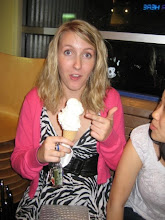I think that this is one of the more interesting female characters that we've read about in Kid's Lit. While Pippi was a fun, exciting (and, let's admit it - slightly annoying) character, she still didn't seem as realistic as Saaski. Pippi represents those children who are considered outcasts, but take their differences and rise above them, not caring and sort of belong without belonging to society. She doesn't feel uncomfortable in her own skin and makes her differences into a positive thing. Whether blissfully unaware of her bizarre behavior or consciously sticking it to convention, Pippi finds a way to have a good time.
Saaski, on the other hand, is almost constantly aware of her differences. She is so uncomfortable in her own skin and her own home. She doesn't have a horse or a monkey to keep her company when she feels lonely for an inexplicable reason. Having forgotten her origins, she just knows that she is not like the other children or even the other villagers in both appearance and action. Saaski feels that she must hide her differences in order to belong and even after she shrinks her toes and fingers, the children still tease and call her names like strangeling.
I think it's difficult to choose a good role model for female readers. Saaski is a character with whom I think many lonely, alienated young girls could identify with and understand, perhaps lending comfort to those readers because they know what it's like to feel left out and different. However, Pippi is a positive role model because she embraces her differences and does her own thing. I think it's good for children to read and compare the characters and perhaps find a happy medium between the two.
Purpose for Imaginative Literature
15 years ago
